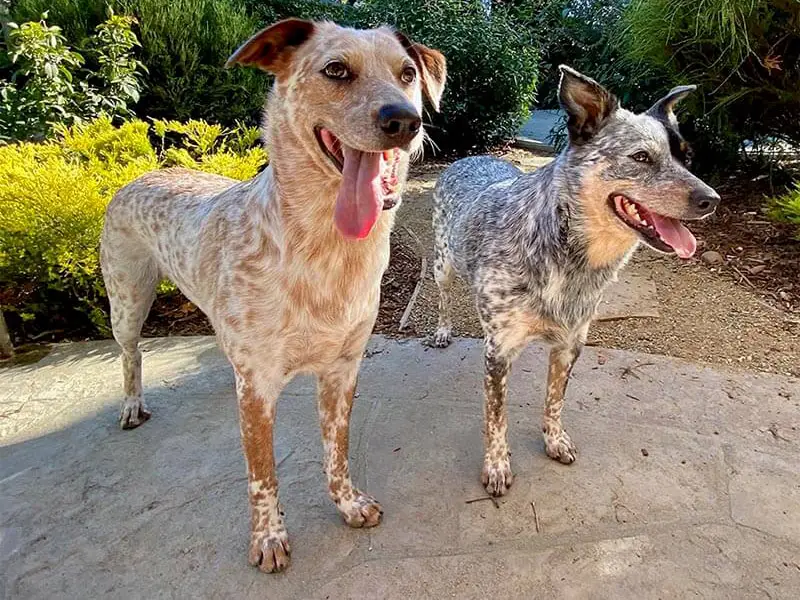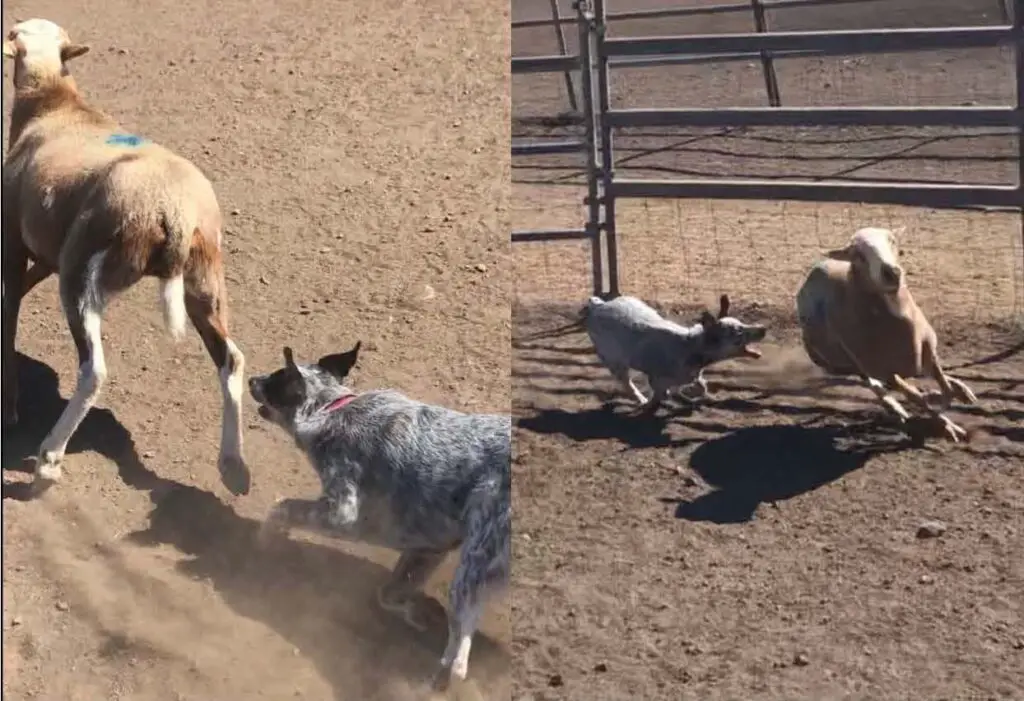I’m in my kitchen, watching my two Australian Cattle Dogs (ACD) play (my favorite pastime) and wondering, why do these two ACDs have floppy ears? Turns out, most Australian Cattle Dogs’ ears stand up, but some keep the permanent puppy look with floppy ears.
Australian Cattle dogs’ ears are initially floppy and typically stand up by six months of age. AKC show standards describe a Cattle Dog’s ears as small to medium-sized, set far apart on the top of the head, and slightly pointed. It turns out, a Cattle dog’s ear type relies more on genetics than breeding.

I did some research and found that different ear types are more common than I expected. Some ACDs, like my two heelers, have floppy ears or a combination of expressive ears depending on the mood and activity. How common are pointed versus floppy ears? Can Cattle Dog owners influence the ear types? Let’s take a look.
How Common Are Floppy Ears in Cattle Dogs?
Much like humans’ attached versus free earlobes, Cattle Dogs can have a genetic predisposition to erect or floppy ears, depending on the amount of cartilage and collagen produced during development. Depending on the inherited traits, a dog can have both ears upright, both ears folded, or one ear up and one ear folded (which is my favorite!).
Also, size does matter! Smaller ears tend to stand up at an earlier age, while larger ears may require intervention using tape and cardboard, and may ultimately never stand up.
To figure out your pup’s ear size, gently pull the ear tip to the eye. If the tip barely touches the eye’s outer corner it’s small, and if it reaches the inner corner, it’s too large. In today’s Cattle Dogs, pointed or erect ears occur, either naturally or aided, in 90 to 95% of the breed.
Why Do Some Cattle Dogs Have Floppy Ears?
With domestication and breeding intervention, wild Cattle dog traits, such as pointed ears, began to change. Charles Darwin labeled changes through selective breeding “Domestication Syndrome”, and indeed we find that floppy ears are more common, occurring in about 5-10% of Cattle Dogs. Cattle dogs can have floppy ears due to a variety of factors, including:
- Lack of use from reduced danger
- Weakened trait transmission
- Hybridization/Cross-breeding

Disadvantages or Advantages of Floppy Ears on a Cattle Dog
Prick ears were a key survival advantage for ancient Canines and persisted in some domesticated breeds, including Australian Cattle Dogs. Pointed, erect ears enable an ACD to hear better by funneling sounds and by targeting the direction of the sound by turning the ears. In the wild, pointed ears were also easier to keep clean than folded ears.
Cattle dogs with folded ears tend to accumulate inner ear dirt, are more prone to ear infections, and can even develop long-term hearing issues. Floppy ears can also be a disadvantage in dog fights by providing accessible targets for biting or tearing. If damaged, floppy ears can take longer to heal than upright ears due to the lack of structure and control.
However, floppy ears also have advantages such as protection from forest or field debris while hunting. Also, floppy ears add to the cuteness factor many ACD owners seek in their four-legged companions.
Can Cattle Dog Folded Ears Become Pointy?
Australian Cattle Dog owners can influence floppy ears to behave more like a prick ear. ACD owners sometimes use materials like cardboard and tape to gently guide the ears erect. In extreme cases, surgery is performed to force the ear to stand. The latter procedure is becoming less common, believed to be inhumane, and even illegal in certain countries.
In Cattle Dogs, the ears can be a reflection of the activity or mood. For example, when performing herding tasks, both ears are up (see right photo below) or back in a defensive position when biting the heels of the cattle or sheep (see left photo below). Cattle dog ears can also be back and down. I like to call this position the Dobby, the House-elf look (Harry Potter character) when my Heelers are acting shy or guilty. Or my favorite, one up and one down, when my ACDs are reclining and panting, satisfied after a run, a game of ball, or a frisbee catch.

Final Thoughts
No matter which type of ears your Cattle Dog inherits, they will likely live up to their reputation as highly intelligent, watchful, loyal, hardworking canines.
